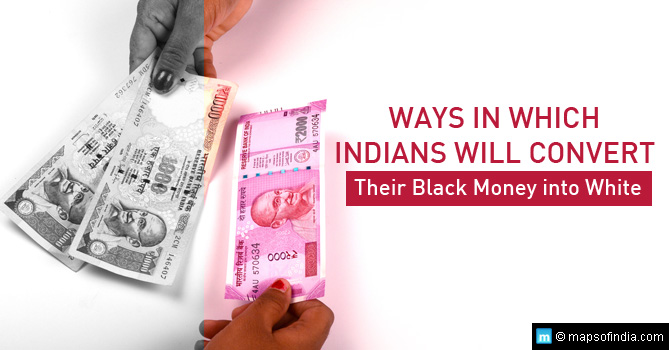Background
The Indian rupee has recorded an all time high slump against the US dollar. As the US dollar grew stronger compared to the major international currencies, the Indian rupee has plummeted nearly 8% since May 2013 against the US dollar. The deplorable condition of rupee against the major foreign currencies as of today (September 6th, 2013, 9:40, UTC) will be evident from the following statistics:
• One US Dollar = 65.434998 Indian rupees
• One British Pound = 102.004779 Indian rupees
• One Australian Dollar = 59.859530 Indian rupees
• One Canadian Dollar = 62.565035 Indian rupees
• One New Zealand Dollar = 51.988753 Indian rupees
• One Euro = 85.886011 Indian rupees
Rampant selling of debts by investors belonging to foreign foundations, a consistent bid for dollars due to its high value in the global market from the banks and various importers are the major suspected causes for the free fall of rupee against dollar. The unstable political scenario of India compounded with the ‘current account deficit’ and the high rate of inflation are some of the important factors of concern, which might push the value of rupee against dollar further down. Hoping against hope, the Reserve Bank’s intercession might just arrest the spiraling downfall of the rupee in the international market. Erstwhile Chief Economic Advisor in the Finance Ministry and present RBI Governor, Raghuram Rajan commented while addressing a press conference that, “The market regulator Securities and Exchange Board of India (SEBI) and the Reserve Bank of India will take ‘warranted’ action to control the rupee slide”.
The increased financial vulnerability of India due to the rupee-dollar imbalances in the global market:
The skewed rupee-dollar balance has affected two thirds of the major Asian markets. Amongst them the financial vulnerability of India is extremely high. According to a BofA-ML research note, “While the lending boom of 2002-2007 is over, the consequences in terms of bad loan are now showing up. Meanwhile the current account deficit and the fiscal deficit have widened sharply, and the money multiplier and the international claims /GDP have increased substantially since 2000”. The vulnerability of the Indian economy is also evident from the panic that has seized the market. Amongst the most affected countries that are emerging economies, India and Brazil had taken the worst hit. Immediate implementation of strict economic reforms is necessary to contain the situation.
But the unstable nature of the current political scenario with the upcoming elections in 2014 only adds more panic to the present situation. In 1991 India had faced a similar situation marked by the same economically degrading symptoms of high deficit in budget, exorbitant oil prices and a marked fall in the exports. But the erstwhile Prime Minister Narasimha Rao and the then Finance Minister Manmohan Singh’s quick reflex of implementing necessary reforms helped the country to turn around. The current free fall of the rupee will invariably trigger inflation. Inflation depletes savings which in turn will affect the external accounts. Hence the natural reaction would be to depend on external sources of finance but the devaluating rupee will invariarably reduce the market attractions. The solution lies in the cutting down of domestic demands. Unlike the 1991 situation, the country, in 2013, has large foreign exchange reserves which will somewhat cushion the shock waves in case of an ultimate crisis.
Prime Minister Manmohan Singh’s take on the rupee dollar imbalance:
The Prime mister is conducive to the fact that the depreciating rupee might be a cause of considerable damage to the emerging Indian Economy and reasons for panic are quite justified. The short term shocks generated by the falling rupee to the market are inevitable but we have to withstand it. The Prime Minister assured that reforms are already under way, being aggressively implemented both by the Reserve Bank and the Government of India to stabilize the rupee.
He added, “Some measures have given rise to doubts in some quarters that capital controls are on the horizon. I would like to assure that the Indian Government is not contemplating any such measures. The last two decades have seen India grow as an open economy and we have benefitted from it. There is no question of reversing these policies just because there is some turbulence in capital and currency market.” He further added that, “We have the more difficult reforms to do such as reduction of subsidies, insurance and pension sector reforms eliminating bureaucratic red tape and implementing Goods and Service Tax. These are not low hanging fruit and they need active political consensus. There may be short term shocks to our economy but we need to face them. That is the reality of operating in a globalized economy whose benefits we have reaped for the last 15 to 20 years.”
SEBI’s role in stabilizing the value of the rupee:
SEBI which controls the entire expanse of the capital market has restricted the exposure norms for ‘currency derivatives’ to control wide contemplations in the market after a joint decision with the Reserve Bank of India. As per a circular issued by SEBI, “SEBI is reducing the exposure that the brokers and their clients can take on currency derivatives and also doubled their margin on dollar rupee contracts. The exposure to all currency contracts for a broker has been capped at 15% of their overall exposure or US$ 50 million, whichever is lower. For clients, this cap would be 6%, or US$ 10 million, whichever is lower.” These restrictions have been imposed because large scale market speculation involving currency derivatives may further devalue the rupee against dollar.
Conclusions:
• The cost of studying abroad will increase considerably, as education loans are granted in rupees. Due to the devaluation of the rupee, establishment costs abroad, which are to be paid in dollars, will increase proportionately.
• The free fall of rupee will affect the grant of loans in a major way. Assuming somebody borrowing a car loan, the amount in rupees that the person has to part with will depend on the car. If the car is imported or assembled with imported parts then the loan amount will naturally shoot up.
• India has a large import bill topped by crude oil. The devalued rupee will increase the import bill resulting in inevitable inflation which will be reflected in higher oil prices, electronics etc.
• Apparently it may seem that the devaluation of rupee will increase the export capacity of our country, but reality is a free falling rupee will hardly be able to enhance the export sector. Hence, exchange rate will not help exports in the long run.
• The slump of the rupee will generally decrease the profits of the companies because of the country’s reliance of overseas supply of raw materials. IT sector may earn more because the revenue they accrue from US will increase their revenue in terms of rupees. Pharmaceuticals sector may also gain because they export more than they import. Aviation industry will suffer majorly because their expenditure is in dollars and earnings in rupees.
• The real estate sector will suffer in general. But the bright side is for the NRIs who can buy more real estate in India aided by the weaker rupee.




